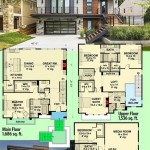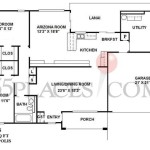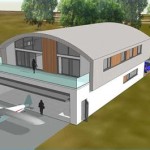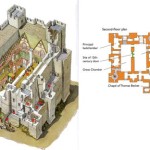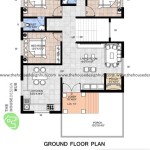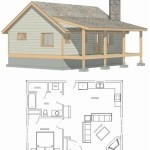Modern 4 Bedroom House Plans Single Story Free: A Comprehensive Guide
Single-story homes, particularly those with four bedrooms, are experiencing a surge in popularity due to their accessibility, convenience, and adaptability to various lifestyles. Modern designs emphasize open floor plans, natural light, and efficient use of space, making them ideal for families, retirees, and individuals who value comfort and ease of living. Obtaining free architectural plans for such houses offers a cost-effective starting point for potential homeowners and builders. This article explores key aspects of modern four-bedroom single-story house plans available for free, covering design principles, considerations for accessibility, and resources for finding appropriate plans.
The term "free" in relation to house plans often refers to preliminary designs or conceptual layouts offered by architects, builders, or online resources to attract potential clients. These plans may lack the detailed engineering specifications required for construction but can provide a valuable foundation for personalization and further development. Understanding the scope and limitations of free plans is crucial before embarking on a building project.
Key Design Principles of Modern Single-Story Homes
Modern single-story house plans typically prioritize open-concept living, connecting the kitchen, dining area, and living room into a unified space. This design fosters interaction and a sense of spaciousness. Large windows and sliding glass doors are frequently incorporated to maximize natural light and provide seamless transitions to outdoor living areas, such as patios or decks. The orientation of the house on the site is also critical, considering factors such as sunlight exposure, prevailing winds, and views.
The layout of a four-bedroom single-story house typically includes a master suite with a private bathroom and walk-in closet, along with three additional bedrooms that share one or two bathrooms. The arrangement of these bedrooms relative to the living areas can vary. Some designs cluster the bedrooms together in one wing of the house for privacy and quiet, while others might place one bedroom near the entrance, potentially serving as a guest room or home office. A well-designed plan also incorporates practical elements like a laundry room, mudroom (particularly in areas with inclement weather), and adequate storage space throughout the house.
Emphasis on sustainable design is a hallmark of many modern homes. This includes using energy-efficient windows and insulation, incorporating passive solar heating and cooling strategies, and selecting eco-friendly building materials. Many free plans may not explicitly address these elements but can be adapted to incorporate sustainable features. Furthermore, modern designs often feature clean lines, minimalist aesthetics, and a focus on functionality. This translates to simple rooflines, uncluttered facades, and carefully considered interior finishes.
Accessibility Considerations for Single-Story Living
One of the primary advantages of single-story homes is their inherent accessibility. Eliminating stairs makes them ideal for individuals with mobility challenges, families with young children, and aging homeowners. However, simply being single-story does not guarantee accessibility. Careful consideration must be given to specific design features to ensure the home is truly accessible for everyone.
Wide doorways (at least 36 inches) are essential for wheelchair maneuverability. Hallways should also be sufficiently wide to allow for easy turning. Ramps, rather than steps, should be used at entrances and exits. Bathrooms require particular attention, with features such as grab bars, roll-in showers, and accessible toilets. Kitchens should also be designed with accessibility in mind, including adjustable-height countertops and appliances, and ample knee space under sinks and work surfaces.
Beyond physical accessibility, consider sensory accessibility. Good lighting is crucial for individuals with visual impairments. Acoustic design can help reduce noise levels and improve communication for those with hearing difficulties. Contrasting colors can aid in navigation for people with low vision. Integrating these accessibility considerations into the initial design phase is more cost-effective than retrofitting later. When utilizing free house plans, it is imperative to critically evaluate and adapt them to meet specific accessibility needs, potentially requiring consultation with an accessibility specialist.
Locating and Evaluating Free House Plans for Modern 4 Bedroom Single Story Homes
Several online resources offer free house plans, ranging from basic layouts to more detailed designs. Websites of architectural firms sometimes provide complimentary plans as a marketing tool. Home improvement retailers may also offer free plans as part of their service offerings. Online plan databases, while often featuring paid plans, may also include a selection of free options. It is essential to be discerning when sourcing free plans and to understand their limitations.
Before using any free plan, it is crucial to evaluate its completeness and accuracy. Determine if the plan includes all necessary details, such as room dimensions, window and door locations, and basic structural information. Confirm that the plan conforms to local building codes and zoning regulations. A structural engineer should review the plan to ensure its structural integrity and suitability for the specific site conditions. Be aware that free plans may lack essential details like electrical, plumbing, and HVAC layouts, requiring additional professional expertise to develop.
Customization is often necessary when using free house plans. The plan may need to be modified to fit the specific site dimensions, orientation, or desired aesthetic. Changes may also be required to accommodate accessibility needs or to incorporate sustainable design features. Working with an architect or building designer can help personalize the plan and ensure it meets all requirements. While the initial cost of a customized plan may seem higher, it can save time and money in the long run by preventing costly errors and ensuring the house is tailored to the homeowner's specific needs and preferences.
Furthermore, be prepared to invest in professional services even when using free plans. Consultation with a structural engineer, a licensed architect, and a building contractor is essential to ensure the project is executed safely and efficiently. Building permits are always required, adding another layer of complexity and expense. While free plans provide a starting point, they should not be viewed as a substitute for professional expertise.
The availability of free four-bedroom single-story house plans can be a valuable resource for prospective homeowners. However, a thorough understanding of the design principles, accessibility considerations, and limitations of free plans is crucial for a successful building project. Careful evaluation, customization, and collaboration with professionals are essential to transforming a free plan into a dream home. Seeking professional advice at every stage of the project helps avoid the risk of compromising safety and functionality.

4 Bedroom House Plan With Double Garage N Dream Home Free Here Raised Hou Narrow Plans Modern Four

Modern 4 Bedroom House Plans

4 Bedroom Modern House Plans Designs Nethouseplans

1850 Sqft Beautiful 4 Bedroom Single Floor House With Free Plan Kerala Home Planners

4 Bedroom House Designs In Kenya To Inspire Your Next Build Co Ke

4 Bedroom House Plan Examples

Amazing 4 Bedroom House Plans Home Designs Nethouseplans

25 Best 4 Bedroom House Plans Ideas

4 Bedroom House Designs In Kenya To Inspire Your Next Build Co Ke

40 X 60 Modern House Architectural Plans Custom 2400sf 4bd 3ba Cottage Blueprint

